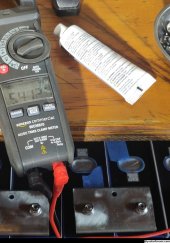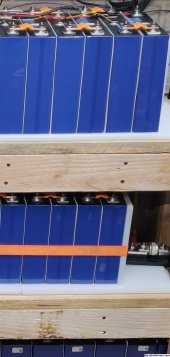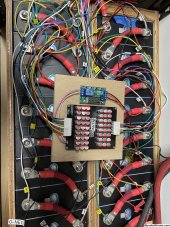The funny thing about this forum. You will get critique, some of which is good for your ego and that’s not, most of which is well deserved. This is a learning location, learn to suck it up, get a thicker skin and use the advice you deem appropriate. Or don’t expose yourself by posting.
LTO is the safest of the commonly used lithium chemistries. That being said, we are now using DC battery voltage that can easily have an arc fire. A bad terminal connection (resistance) can start out with heat damage (cell&buss) cascading all the way to something similar to hyper powerful DC arc welder, spraying molten debris. My guess is the cell didn’t fail per se, but it got drilled out buy arc. The overcharge failure tests I’ve seen involved one cell and the result was underwhelmingly boring, that could be quite different if it’s part of a group with higher voltage coursing through it. So an out of balance cell could also be the cause.
The critique whether or not you like it. Periodically check the torque of the cell nuts. Loose the slotted buss bars in favor of a full hole type. Drill and tap the busses for a balance lead and use large hole terminals for the end cell balance leads. Use a flame resistant (or fire retardant treated wood) support surface to evenly support the cells off the storage shelf wire mesh.
Take it or leave it.
LTO is the safest of the commonly used lithium chemistries. That being said, we are now using DC battery voltage that can easily have an arc fire. A bad terminal connection (resistance) can start out with heat damage (cell&buss) cascading all the way to something similar to hyper powerful DC arc welder, spraying molten debris. My guess is the cell didn’t fail per se, but it got drilled out buy arc. The overcharge failure tests I’ve seen involved one cell and the result was underwhelmingly boring, that could be quite different if it’s part of a group with higher voltage coursing through it. So an out of balance cell could also be the cause.
The critique whether or not you like it. Periodically check the torque of the cell nuts. Loose the slotted buss bars in favor of a full hole type. Drill and tap the busses for a balance lead and use large hole terminals for the end cell balance leads. Use a flame resistant (or fire retardant treated wood) support surface to evenly support the cells off the storage shelf wire mesh.
Take it or leave it.







